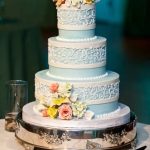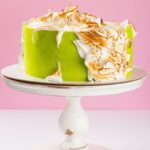Why settle for traditional cookie decorating techniques when you can unleash your creativity with cake frosting? Discover the endless possibilities and vibrant colors that cake frosting brings to cookie decorating. In this blog post, we will explore the exciting world of using cake frosting to decorate cookies and provide step-by-step instructions to help you achieve stunning results.
When it comes to cookie decoration, most people reach for traditional cookie icing. However, cake frosting offers a richer and creamier texture that allows for greater control and intricacy in designs. Delve into the differences between cake frosting and traditional cookie icing and learn how cake frosting can elevate your cookie decorating game.
Before you begin your adventure into cake frosting cookie decorating, it’s essential to have the right tools and ingredients at hand. Unveil the must-have equipment, such as piping bags and different tips, that will help you achieve a professional finish. Additionally, explore the array of gel food coloring options available to bring life and vibrancy to your designs.
Join us as we embark on a journey through the art of decorating cookies with cake frosting. From basic techniques like swirls and rosettes to advanced techniques like marbling and painting, we’ll provide step-by-step instructions to guide you every step of the way. Get ready to unlock your artistic potential with cake frosting cookie decorating.
Understanding the Difference
When it comes to decorating cookies, there are two main options: cake frosting and cookie icing. While both can be used to add color and design to your cookies, there are some key differences between the two. Understanding these differences will help you choose the right option for your desired outcome.
Cake frosting is typically thicker and creamier compared to cookie icing, which allows for greater control and intricacy in designs. It provides a richer texture that can hold its shape well, making it perfect for creating details and piped designs on cookies. On the other hand, cookie icing is thinner and more fluid, making it easier to spread across larger areas of the cookie.
| Comparison | Cake Frosting | Cookie Icing |
|---|---|---|
| Consistency | Thicker and creamier | Thinner and more fluid |
| Control | Allows for greater control and intricacy in designs | Easier to spread across larger areas of the cookie |
| Main Use | Create details and piped designs on cookies | Add color and cover larger areas of the cookie |
It’s important to note that while cake frosting can be used as a substitute for cookie icing, the reverse may not always work. Cookie icing may not hold its shape well if used for intricate designs or piped decorations. If you want to create detailed designs on your cookies, using cake frosting will provide you with more control and better results.
When choosing between cake frosting and cookie icing, consider the desired outcome of your cookie decorations. If you’re looking for intricate designs or piped details, cake frosting is the way to go. On the other hand, if you want to add color and cover larger areas of the cookie, cookie icing may be more suitable.
By understanding the difference between cake frosting and cookie icing, you can choose the option that best suits your needs and achieve stunning results in your cookie decorating endeavors.
Essential Tools and Ingredients for Cake Frosting Cookie Decorating
When it comes to cake frosting cookie decorating, having the right tools and ingredients is key to achieving professional-looking results. In this section, we will dive into the essential items you’ll need to embark on your cake frosting cookie decorating journey.
Tools
- Piping bags: These are indispensable for creating intricate designs on your cookies. Disposable piping bags are convenient, but reusable ones are more eco-friendly.
- Decorating tips: Different tips give you a variety of options when it comes to creating different designs, from fine lines to rosettes. Start with some basic tips like round and star tips and expand your collection as you experiment.
- Couplers: These handy accessories allow you to easily switch between different tips without changing the bag of frosting.
- Offset spatula: Perfect for spreading frosting smoothly over cookies or creating texture.
- Toothpicks or small brushes: These are great for adding small details or correcting mistakes.
- Turntable: While not essential, a turntable can make it easier to rotate cookies while decorating and achieve even frosting application.
Ingredients
- Cake frosting: Opt for buttercream or cream cheese frosting for their richness and stability. You can use store-bought frosting or make your own from scratch using recipes available online.
- Gel food coloring: Unlike liquid food coloring, gel colors won’t cause your frosting to become runny. Plus, they offer vibrant shades that can make your designs truly pop.
- Edible glitter or sprinkles: Enhance the visual appeal of your cookies by adding a touch of sparkle with edible glitter or some colorful sprinkles.
Remember that practice makes perfect when it comes to using these tools and ingredients effectively. Experiment with different frostings, colors, and designs until you find what works best for you. With time and experience, you’ll soon be creating beautiful cake-frosting-decorated cookies that will impress both friends and family.
Basic Techniques for Using Cake Frosting on Cookies
Using cake frosting to decorate cookies opens up a world of creative possibilities. With its rich and creamy texture, cake frosting allows for greater control and intricacy in designs compared to traditional cookie icing. In this section, we will guide you through the basic techniques for using cake frosting on cookies, providing step-by-step instructions to help you achieve stunning results.
The first step in using cake frosting on cookies is preparing the frosting itself. Ensure that your frosting is at a consistency that makes it easy to pipe and spread onto the cookies. Depending on the type of cake frosting you are using, you may need to adjust the thickness by adding more powdered sugar or liquid. It’s important to achieve a balance between a soft and smooth texture that is firm enough to hold its shape once piped.
Once your cake frosting is ready, fill a piping bag fitted with your desired tip. For beginners, starting with a round tip is recommended as it allows for simple designs like dots or lines. Hold the piping bag firmly but gently and apply pressure evenly while guiding the tip across the surface of the cookie. Practice creating different shapes and patterns, such as swirls or rosettes, before moving on to more complex designs.
Borders can add an elegant finishing touch to your decorated cookies. To create borders with cake frosting, use a piping bag fitted with a small round tip or a star-shaped one for added flair. Gently squeeze the bag while moving it along the edge of the cookie, allowing the frosting to flow out in a continuous line.
One important tip when using cake frosting on cookies is to ensure that it stays put and dries beautifully on the surface. To achieve this, allow your frosted cookies to sit undisturbed for at least an hour before stacking or packaging them. This will give ample time for the frosting to set and dry completely.
By mastering these basic techniques for using cake frosting on cookies, you can create beautiful and professional-looking designs. With practice, you can experiment with different colors, patterns, and textures to make your cookies stand out. In the next section, we will explore advanced techniques and unique designs that will take your cake frosting cookie decorating skills to the next level.
Advanced Techniques and Unique Designs
Marbling
- To achieve a marbled effect, start by piping a base layer of one color frosting onto the cookie.
- Use a different colored frosting and pipe thin lines or dots across the base layer.
- Use a toothpick or skewer to gently swirl the colors together, creating a marble pattern.
- Alternatively, you can use a small paintbrush to lightly blend the colors for a more delicate look.
Painting
- Mix gel food coloring with clear alcohol (such as vodka) or lemon extract to create edible paint.
- Use small brushes to paint intricate designs directly onto the cookies.
- Layer different colors and shades for depth and dimension.
- Allow the painted designs to dry before adding other frosting details.
Glossy Finishes
- Achieve a glossy finish on your cookies by using royal icing as an alternative to cake frosting.
- Apply a thin layer of royal icing over your base layer of cake frosting.
- Let it dry completely before applying any additional decorations or designs.
Textured Frosting
- Create texture on your decorated cookies by using textured piping tips or tools.
- Pipe lines, zigzags, or other patterns onto the cookies using a thick consistency frosting.
- Experiment with different textures to add interest and dimension to your designs.
Edible Glitter
- Add sparkle and glamor to your cake frosting decorated cookies with edible glitter.
- Sprinkle edible glitter onto wet frosting before it dries completely.
- You can also mix edible glitter with clear alcohol or lemon extract to create an edible glitter paint for more precise application.
Realistic Floral Designs
- Take inspiration from nature and create realistic floral designs on your cookies using cake frosting.
- Pipe small buttercream flowers, such as roses or daisies, on your cookies.
- Use different frosting colors to create shading and depth in the floral designs.
- Finish the flowers with small piped leaves and stems.
Fondant Accents
- Combine cake frosting with fondant for unique accents on your decorated cookies.
- Roll out a thin layer of colored fondant and use cookie cutters to create shapes like flowers, stars, or hearts.
- Attach the fondant accents to the cookies using a thin layer of frosting as adhesive.
- Add additional details and embellishments using piping bags filled with cake frosting.
By exploring these advanced techniques and unique designs, you can take your cake frosting cookie decorating skills to new heights. Whether you want to create marble patterns, paint intricate designs, add glossy finishes, experiment with textured frosting, incorporate edible glitter, create realistic floral designs, or use fondant accents – the possibilities are endless.
Feel free to mix and match these techniques to unleash your creativity and achieve stunning results that will impress both kids and adults alike. Remember to practice and have fun along the way as you discover your own artistic style in cake frosting cookie decorating.
Troubleshooting Common Challenges
In the world of cake frosting cookie decorating, there are bound to be some challenges along the way. In this section, we will address some common issues that may arise and provide solutions and expert tips to help you overcome these hurdles. By understanding how to troubleshoot these challenges, you can ensure that your cake frosting decorations turn out flawlessly every time.
One common challenge is achieving the right consistency of frosting. The texture of your frosting plays a crucial role in creating beautiful designs on your cookies. If your frosting is too thin or runny, it will not hold its shape and may slide off the cookie.
On the other hand, if it is too thick, it will be difficult to pipe and spread onto the cookies smoothly. To troubleshoot this issue, try adjusting the amount of liquid or powdered sugar in your frosting recipe until you achieve a consistency that holds its shape without being too stiff.
Another challenge that decorators often face is bleeding colors. This happens when different colored frostings begin to blend together and lose their defined edges. To prevent this issue, make sure to let each color of frosting dry completely before adding another color nearby. You can also consider allowing each layer of frosting to fully set before adding additional decorations on top.
Creating overly thick designs can also be a challenge when using cake frosting on cookies. Thick designs may take longer to dry or not dry completely, leading to smudging or smearing when handling the cookies. To avoid this problem, practice piping consistent pressure while applying the frosting and try not to layer it too heavily in one area.
| Challenge | Solution |
|---|---|
| Achieving the right consistency of frosting | Adjust the amount of liquid or powdered sugar in your recipe |
| Bleeding colors | Allow each color of frosting to dry completely before adding another |
| Creating overly thick designs | Pipe with consistent pressure and avoid layering frosting too heavily in one area |
By addressing these common challenges and implementing the suggested solutions, you can overcome obstacles that may arise while using cake frosting to decorate cookies. With patience, practice, and a little troubleshooting, you will be able to achieve flawless results in your cake frosting cookie decorating journey.
Expert Inspiration
Introduction to Expert Inspiration
In this section, we will showcase the incredible talent and creativity of renowned bakers who have mastered the art of cake frosting decorated cookies. These expertly crafted cookie masterpieces will serve as a source of inspiration and motivation for aspiring cookie decorators. From whimsical characters to elegant wedding cookies, these examples will demonstrate the endless possibilities that cake frosting brings to cookie decorating.
Whimsical Characters: Bringing Imagination to Life
One of the most exciting aspects of using cake frosting to decorate cookies is the ability to bring whimsical characters to life on the edible canvas. Talented bakers have transformed plain cookies into adorable creatures, beloved cartoon characters, and magical creatures using vibrant colors and precise detailing. From animals like pandas, unicorns, and elephants, to beloved characters from movies and TV shows, these expertly decorated cookies are sure to captivate both children and adults alike.
For example, one skilled baker created a set of Sesame Street-inspired cookie characters using different shades of cake frosting. Each character was meticulously piped onto the cookies, capturing their distinctive features with astounding accuracy. Elmo had his signature orange fur and googly eyes, while Cookie Monster’s iconic blue fur was recreated flawlessly. These whimsical character cookies are not only visually stunning but also guaranteed to bring joy and delight when served at parties or given as gifts.
Elegant Wedding Cookies: A Taste of Luxury
Cake frosting can also be used to create elegant and sophisticated designs for special occasions such as weddings. Renowned bakers have taken cookie decorating to new heights by transforming simple sugar cookies into miniature pieces of art that perfectly complement any wedding theme or color palette.
Imagine delicate lace patterns piped onto diamond-shaped cookies using white cake frosting, creating an exquisite masterpiece reminiscent of an actual wedding gown. Intricate designs inspired by floral motifs adorned round cookies with a touch of elegance and romance. These wedding cookies not only serve as stunning edible favors but also reflect the personal style and attention to detail that couples desire for their special day.
Innovative Techniques: Pushing the Boundaries of Cake Frosting Cookie Decorating
Expert bakers are constantly pushing the boundaries of cake frosting cookie decorating, employing innovative techniques to create truly unique designs. A top baker experimented with marbling techniques, swirling different colors of frosting together on heart-shaped cookies to create mesmerizing patterns reminiscent of beautiful stone textures. The result was a collection delectable treats that were not only visually appealing but also a delight for the taste buds.
Another exceptional technique demonstrated by an expert baker involved using cake frosting to create dimensional designs on cookies. By skillfully layering and manipulating the frosting, they brought animals, flowers, and even city skylines to life in a way that added depth and texture to the cookies. These three-dimensional creations showcased just how versatile cake frosting can be when it comes to decorating cookies.
Overall, these examples of expert inspiration highlight the incredible potential of using cake frosting to decorate cookies. Whether it’s creating whimsical characters, elegant wedding cookies, or pushing the boundaries with innovative techniques, cake frosting offers endless opportunities for edible artistry. Let these masterpieces fuel your imagination and inspire you to embark on your own creative journey in cake frosting cookie decorating.
Frequently Asked Questions and Answers
How long does cake frosting last on cookies?
Cake frosting can last on cookies for several days, depending on the specific recipe and storage conditions. Generally, once the cake frosting has dried and set on the cookies, it should remain stable for about 3-4 days at room temperature.
However, it is important to keep in mind factors such as humidity and exposure to moisture that may affect the longevity of the frosting. To ensure freshness, store decorated cookies in an airtight container at room temperature or in a cool, dry place.
Can I use any type of cake frosting to decorate cookies?
While you can experiment with different types of cake frostings for cookie decoration, not all types may be suitable. Buttercream frosting is usually the most popular choice due to its creamy texture and ability to hold intricate designs well.
Royal icing can also work for certain types of decorating techniques but tends to dry harder and more brittle. It is recommended to avoid cream cheese or whipped cream frostings as they may not set properly or hold their shape as desired.
Are there alternatives to traditional cake frostings for those with dietary restrictions?
Yes. If you have dietary restrictions or preferences, there are alternative options available that can still yield beautiful results when decorating cookies. Vegan buttercream made with dairy-free margarine or shortening can be used instead of traditional buttercream. Additionally, plant-based milk and powdered sugar can create a simple glaze-like consistency that works well for basic designs. Furthermore, there are specialized cake frostings available that cater to specific dietary needs such as gluten-free or sugar-free options.
Can I freeze decorated cookies with cake frosting?
Freezing decorated cookies with cake frosting is possible but requires careful handling and storage techniques. Firstly, ensure that your cookies are fully decorated and completely dry before freezing. Place the decorated cookies in an airtight container, separating layers with parchment paper or wax paper to prevent them from sticking together.
Freeze the cookies for up to 1-2 months. When ready to serve, thaw the cookies at room temperature without removing them from the container until they reach room temperature to avoid condensation forming on the frosting.
How can I prevent my cake frosting from bleeding colors?
To prevent colors from bleeding or smudging on your decorated cookies, there are a few techniques you can employ. Firstly, be sure that your base layer of frosting is completely dry before adding any additional decorations or colors on top. This will help create a barrier between different colors and prevent them from blending together.
Additionally, be cautious when adding wet ingredients such as water or alcohol-based food coloring as these may cause bleeding. Finally, make sure to use gel food coloring rather than liquid food coloring, as gel colors are more concentrated and less likely to bleed into each other.
Conclusion
In conclusion, cake frosting offers a unique and vibrant way to decorate cookies that goes beyond traditional icing techniques. Throughout this blog post, we have explored the differences between cake frosting and cookie icing, learned about essential tools and ingredients for successful cake frosting cookie decorating, and mastered basic and advanced techniques. We have also addressed common challenges that may arise and provided expert inspiration from renowned bakers.
By embracing cake frosting as a medium for cookie decoration, you can truly unlock your artistic potential. The endless possibilities and vibrant colors that cake frosting brings to the table allows for greater control and intricacy in designs. With the right tools, ingredients, and techniques, you can achieve stunning results that will captivate anyone who lays eyes on your edible works of art.
Remember, practice makes perfect. Don’t be afraid to experiment with different designs and techniques. Perhaps start with the basic techniques we’ve covered in this blog post before moving on to more advanced ones. By taking small steps and building your confidence along the way, you will become more comfortable with using cake frosting on your cookies.
Frequently Asked Questions
Can you use frosting as icing for cookies?
Yes, frosting can be used as icing for cookies. Frosting typically refers to a thicker, creamier mixture that is used to cover and decorate cakes or cupcakes.
However, it can also be applied to cookies as a sweet and decorative topping. While the consistency may not be as thin or fluid as traditional icing, frosting can still create an attractive and delicious finish on cookies.
Is cookie icing the same as cake icing?
Cookie icing and cake icing are similar in some ways but also have notable differences. While both are used to add flavor and decoration to baked goods, cookie icing is typically thinner, smoother, and more fluid than cake icing.
This allows it to spread easily over the entire surface of a cookie without becoming too thick or heavy. Cake icing, on the other hand, tends to be thicker and more substantial since it needs to support layers of cake.
What type of frosting is best for cookie decorating?
The best type of frosting for cookie decorating depends on personal preferences and desired outcomes. Royal icing is commonly used for intricate cookie designs due to its ability to harden quickly after being applied. It allows for fine details and piped patterns that hold their shape well.
Buttercream frosting is another popular choice for cookie decorating as it can be easily tinted with food coloring and provides a smooth finish. It’s also more flavorful compared to royal icing but doesn’t harden as firmly. Ultimately, the best frosting for cookie decorating will depend on factors such as taste preferences, desired decorations, and the specific techniques being used.

Welcome to my blog about home and family. This blog is a place where I will share my thoughts, ideas, and experiences related to these important topics. I am a stay-at-home mom with two young children. I hope you enjoy reading it! and may find some helpful tips and ideas that will make your home and family life even better!





